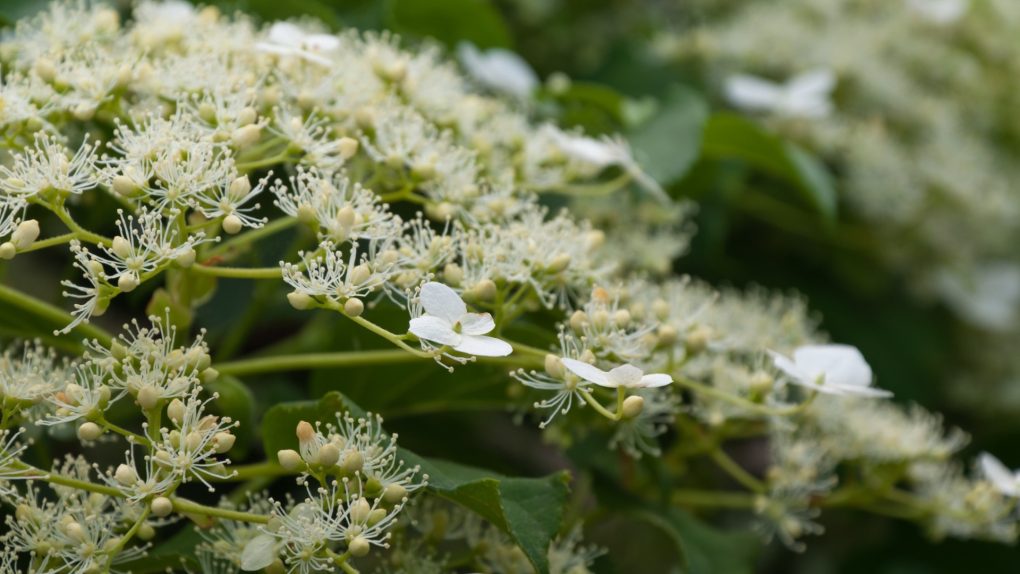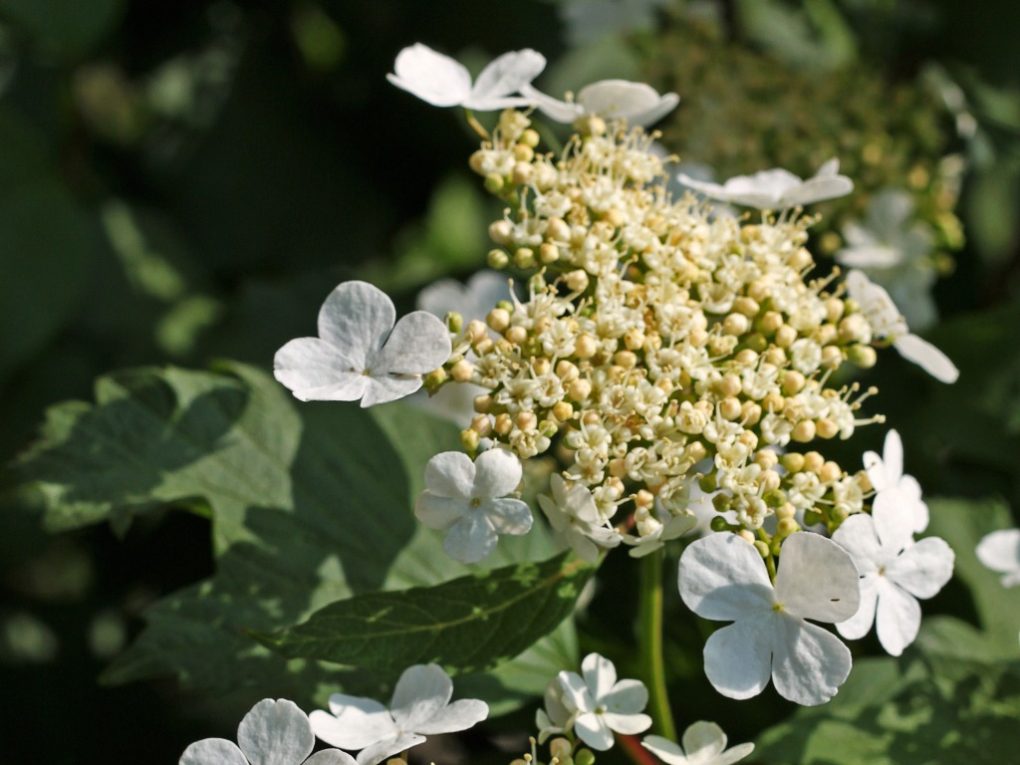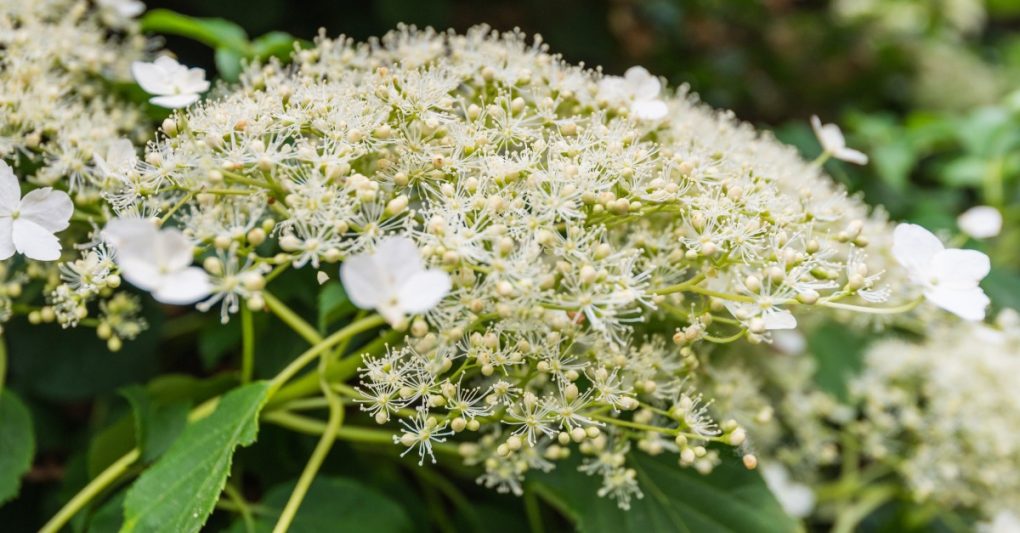How Quickly Does a Climbing Hydrangea Grow? A Comprehensive Guide.
A climbing hydrangea (Hydrangea anomala subsp. petiolaris) generally grows slowly to moderately, depending on various conditions like sunlight, soil, and water. In the first few years of its life, it grows relatively slower, but once established, it can achieve a growth rate of 1 to 2 feet per year.

A climbing hydrangea’s overall growth rate is impacted by site conditions, climate, pruning, and proper care. Providing optimal conditions, including partial to full shade and well-drained soil with ample organic matter, can promote healthy growth and encourage faster establishment of the plant. In addition, regular watering and appropriate fertilization can also contribute to increased growth rates.
Table of Contents
Growth Rate of Climbing Hydrangea
Climbing hydrangeas exhibit distinct stages of growth, each characterized by specific changes and developments. Gardeners can benefit from understanding these stages as they care for and maintain these beautiful plants.
1. Initial Establishment (First Year)
During the first year of growth, climbing hydrangeas focus on establishing a strong root system. The plant develops a deep and extensive network of roots that allow it to draw nutrients and moisture from the soil. Above the ground, the plant produces minimal growth, with small leaves and limited stem development. Patience is key during this stage, as the plant allocates energy toward building a solid foundation for future growth.
2. Vegetative Growth (Second and Third Years)
Once the climbing hydrangea has successfully established its root system, it enters a phase of vigorous vegetative growth. In the second and third years, the plant experiences rapid expansion, developing more extensive foliage and stems. The leaves grow larger, while the branches elongate, reaching out to climb and spread across walls, fences, or other supporting structures. This stage showcases the plant’s ability to adapt and thrive, providing a lush and vibrant appearance.
3. Maturation and Flowering (Fourth Year Onward)
As the climbing hydrangea enters its fourth year and beyond, it transitions into the maturation and flowering stage. This is when the plant produces abundant blooms, adorning the surrounding area with clusters of fragrant and attractive flowers. The flowers typically emerge during late spring or early summer and persist for several weeks. The mature climbing hydrangea exhibits a balance between foliage and flowers, creating a visually stunning display.

To summarize the growth stages of climbing hydrangea, refer to the following table:
| Growth Stage | Characteristics |
| Initial Establishment | Focus on establishing root system, minimal aboveground growth |
| Vegetative Growth | Rapid expansion of foliage and stems |
| Maturation and Flowering | Abundant blooms, balancing foliage and flowers |
Understanding the growth rate and stages of climbing hydrangeas enables gardeners to provide appropriate care and support, ensuring healthy and flourishing plants.
Factors Affecting Growth Rate
Climbing hydrangea is known for its slow growth rate. The plant may take up to three to five years to reach the flowering stage. However, once established, it can grow up to 50 feet or more in height and produce fragrant flowers all summer. The growth rate of climbing hydrangea can be affected by several factors, including:
● Soil: Climbing hydrangea prefers well-drained soil that is rich in organic matter. Soil that is too wet or too dry can hinder growth.
● Water: Climbing hydrangea requires regular watering, especially during the first few years of growth. Lack of water can slow growth and affect the plant’s health.
● Light: Climbing hydrangea prefers partial shade to full shade. Too much sunlight can damage the leaves and slow down growth.
● Pruning: Pruning can encourage growth and improve the plant’s overall appearance. However, excessive pruning can slow down growth and reduce flower production.
Optimal Growing Conditions
To ensure optimal growth and flowering, providing climbing hydrangea with the right growing conditions is important. Here are some tips:
● Location: Choose a location that receives partial shade to full shade. Avoid planting in full sun, especially in the south.
● Soil: Use well-drained soil that is rich in organic matter. Add compost or peat moss to improve drainage if the soil is too heavy.
● Water: Water regularly, especially during the first few years of growth. Make sure the soil is moist but not soggy.
● Support: Climbing hydrangea needs a sturdy support structure to climb on, such as a trellis or wall. Ensure the support is strong enough to hold the weight of the plant.
● Pruning: Prune sparingly to encourage growth and improve the plant’s overall appearance. Remove any dead, damaged, or diseased branches, and trim back any overly long branches.
Planting and Maintenance Tips
Planting Instructions
Climbing hydrangeas are relatively easy to plant and maintain. When planting a climbing hydrangea, choosing a location with well-draining soil and partial to full shade is important. The plant should be placed in a hole twice the size of its root ball and the depth should be the same as in its original container. After planting, water the plant thoroughly and add a layer of mulch around the base to help retain moisture.
Pruning and Training
Climbing hydrangeas require very little pruning, but removing any dead or damaged wood in the early spring is important. If the plant becomes too large, it can be pruned back after flowering in the summer. When training the plant to climb a wall or trellis, gently tie the stems to the support structure with twine or wire.
Fertilizing
Climbing hydrangeas do not require much fertilizer, but feeding the plant in the early spring can be beneficial before new growth appears. Follow the instructions on the label for fertilizer application rates when using a balanced fertilizer, such as a 10-10-10. Overfertilization can result in excessive growth and poor flowering. Overall, climbing hydrangeas are a low-maintenance plant that can add beauty and interest to any garden. With proper planting and maintenance, these plants can thrive for many years.

Common Problems and Solutions
While climbing hydrangeas are generally easy to care for, they can still encounter a few issues. Here are some common problems and their solutions:
Pest and Disease Control
Climbing hydrangeas are susceptible to certain pests and diseases. Here are some of the most common:
| Pest/Disease | Symptoms | Solution |
| Aphids | Stunted growth, yellowing leaves, sticky residue on leaves | Use insecticidal soap or neem oil |
| Spider mites | Yellow or brown leaves, webbing on leaves | Use insecticidal soap or neem oil |
| Leaf spot | Brown or black spots on leaves | Remove infected leaves and avoid overhead watering |
| Powdery mildew | White powdery coating on leaves | Remove infected leaves and improve air circulation |
Troubleshooting Growth Issues
If your climbing hydrangea is not growing as quickly as you’d like, here are some potential solutions:
● Ensure it is planted in a location with the right amount of sunlight. Climbing hydrangeas prefer partial shade.
● Check the soil pH. Climbing hydrangeas prefer slightly acidic soil with a pH between 5.2 and 6.2.
● Ensure the soil is well-draining. Climbing hydrangeas prefer to avoid sitting in wet soil.
● Make sure the plant is getting enough water and climbing hydrangeas like moist soil.
● A balanced fertilizer should be applied once a year in the spring.
